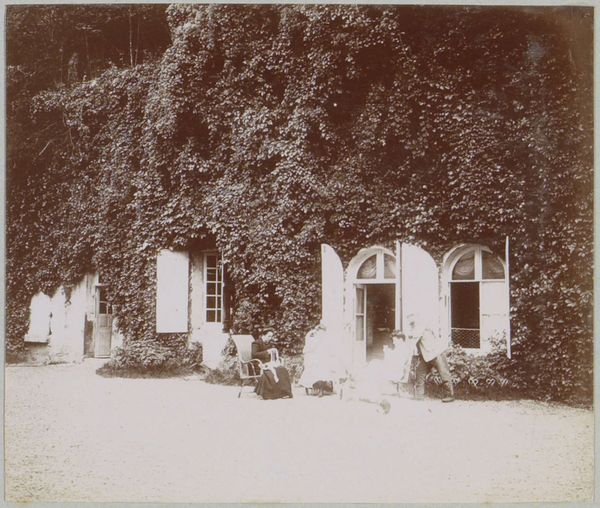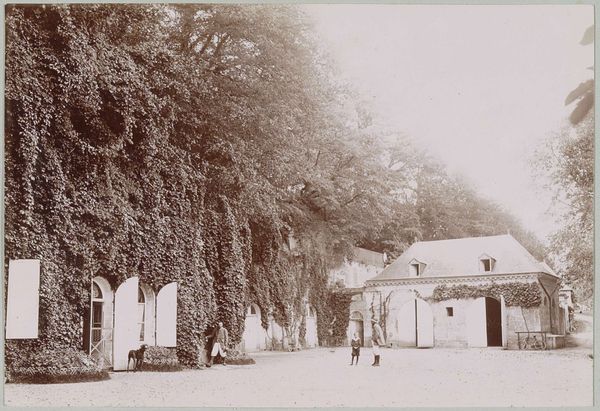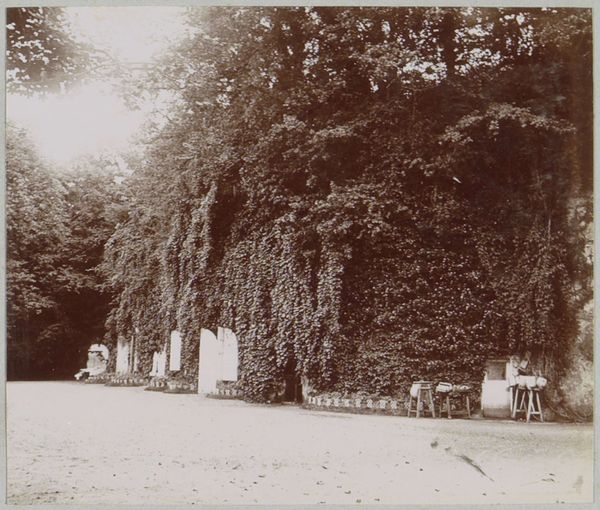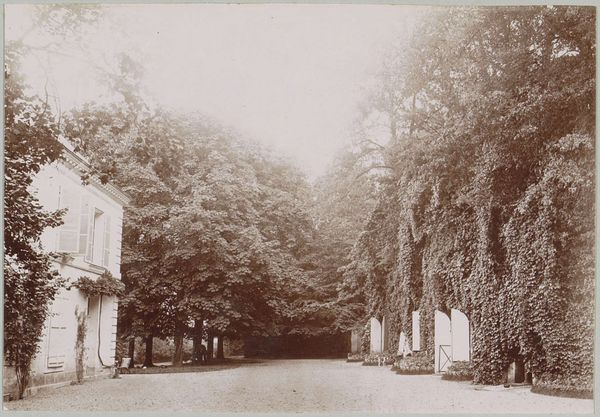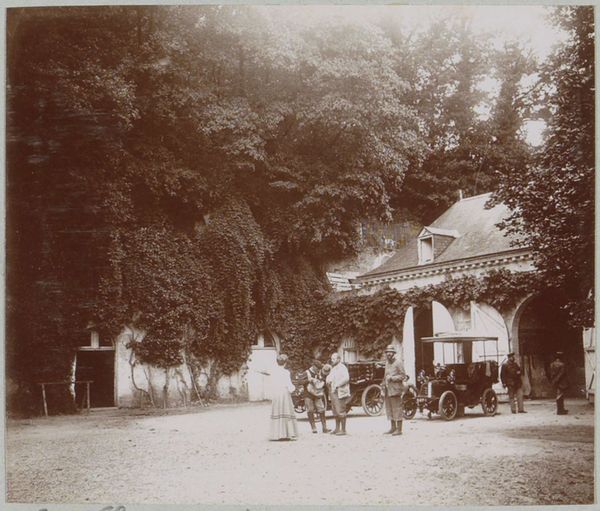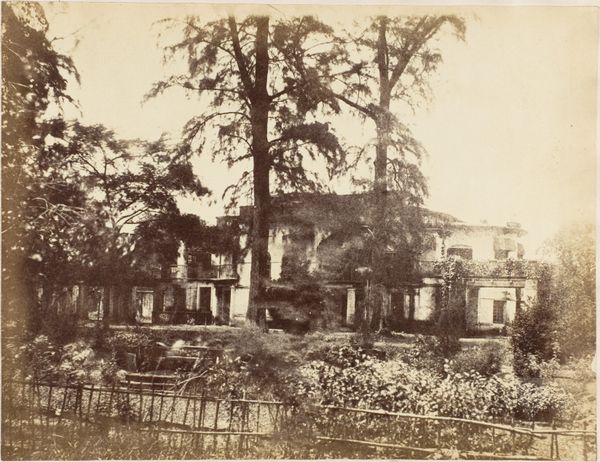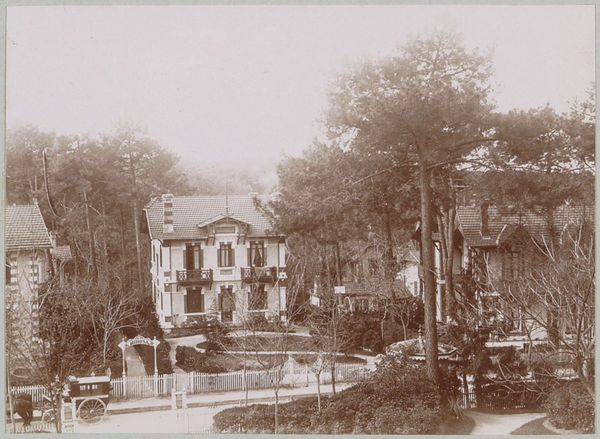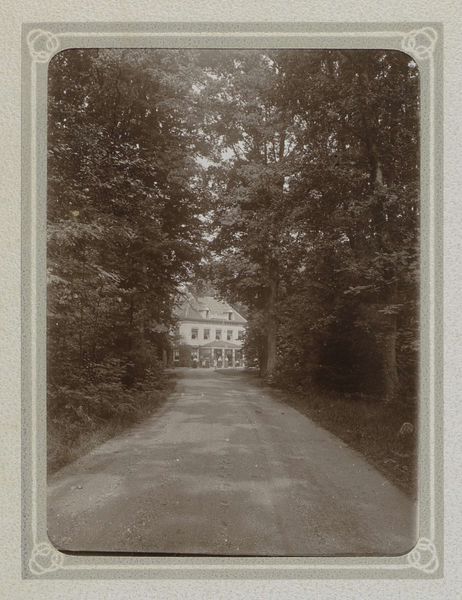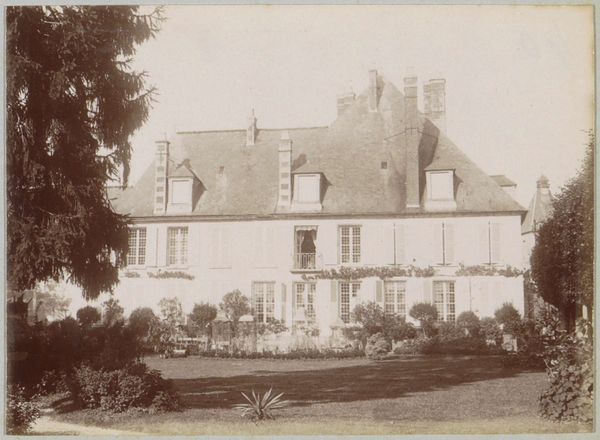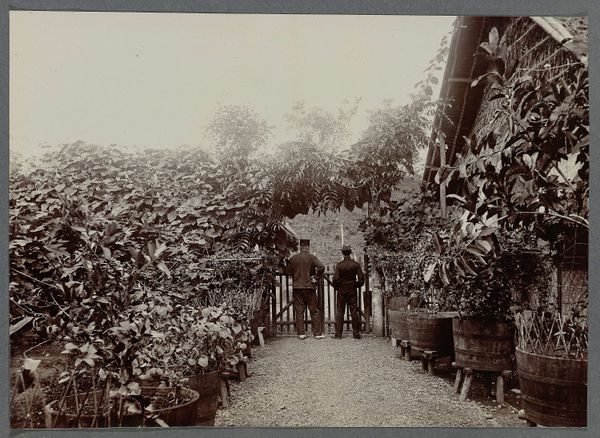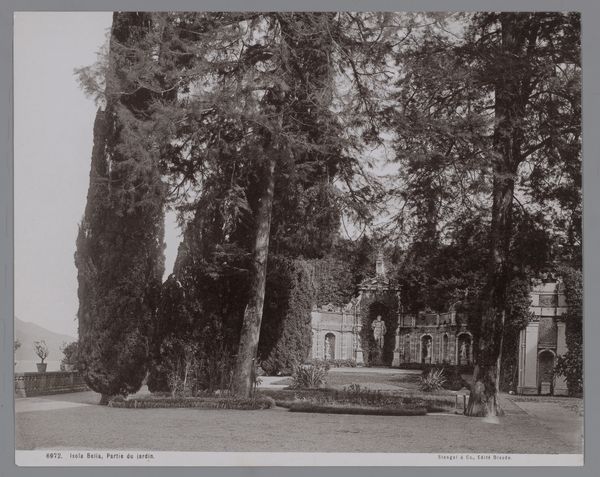
Gezelschap op een binnenplaats (aangeduid als 'La Charpenterie'), vermoedelijk bij een landhuis of kasteel in Frankrijk 1896 - 1899
0:00
0:00
delizy
Rijksmuseum
photography
#
landscape
#
photography
Dimensions: height 115 mm, width 170 mm
Copyright: Rijks Museum: Open Domain
Editor: So, we're looking at a photograph by Delizy, "Gezelschap op een binnenplaats" - which translates to 'Company in a courtyard,' supposedly taken at a country house in France, sometime between 1896 and 1899. The whole scene feels so enclosed by the greenery. What do you see in this piece? Curator: What strikes me is the relationship between the constructed and the natural. Notice how the building seems almost consumed by the foliage. I wonder about the implied power dynamics here. Is nature reclaiming spaces once defined by human activity and possibly privilege? How does this image engage with contemporaneous anxieties surrounding industrialization and its impact on the environment? Editor: That's a thought-provoking point! I hadn't considered it in that light. I was just seeing a family moment captured in time. But thinking about it as nature reclaiming space… Curator: Exactly. Consider also who has access to this kind of 'nature.' During that period, such idyllic settings were primarily accessible to the upper classes. This image becomes not just a portrait of a place, but a commentary on social stratification and the very uneven distribution of 'the natural.' The image is sepia-toned. What kind of meaning can that evoke? Editor: Well, that kind of pushes you into the past. Maybe it feels timeless because it’s hard to associate with a particular decade. Is Delizy possibly reflecting on society itself? Curator: Precisely! The timelessness might invite a broader reflection on historical and ongoing issues of access, environmental impact, and social class. These elements allow us to consider intersectional narratives and challenge established art-historical canons. Editor: I see. I hadn't thought of analyzing it in terms of those kinds of power dynamics, but that definitely adds another layer. Thanks! Curator: It's about understanding art as embedded in broader social and political contexts, allowing us to question what is represented and how.
Comments
No comments
Be the first to comment and join the conversation on the ultimate creative platform.
